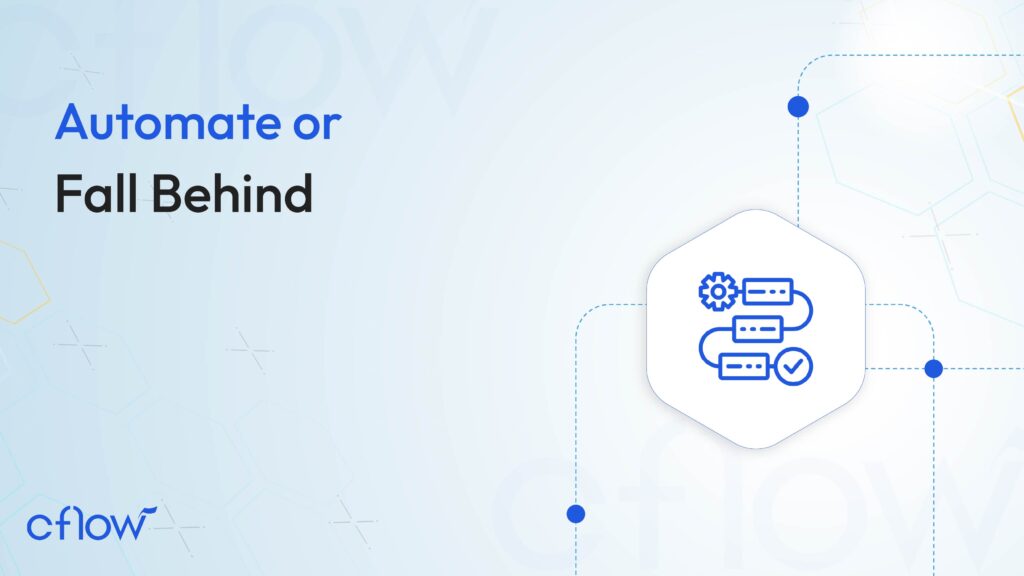Automate or Fall Behind: Why Every Business Needs Workflow Automation in 2025

Doing business in 2025 entails having to deal with constant change, cut-throat competition, and mounting customer expectations. The difficulty is not just keeping up – it’s staying ahead without burning out your team.
The answer isn’t to work harder or hire more people. It’s about working smarter, with the help of workflow automation. As we move further into 2025, companies that adopt automation are running the race, and those that wait with their manual operations are falling behind.
In this article, we dive into why businesses must rely on workflow automation to safeguard their existence and expansion, as well as how it transforms operations, and provide practical steps to get started.
Table of Contents
Why 2025 is the Automation Tipping Point
Different elements have come together, making 2025 the time when automation is vital and not a choice.
Customer Expectations Have Skyrocketed
Nowadays, customers have the expectation of immediate replies, tailor-made experiences, and smooth service. They do not have patience for a three-day wait for an email response or mistakes in their orders. These demands cannot be met by manual processes alone.
Labor Costs Continue Rising
Nowadays, employing skilled workers has become very costly. Since 2020, the usual expenses for recruiting, training, and keeping employees have risen by 40%. Automation assists companies in growing without necessarily increasing their labor costs in a similar manner.
Technology Has Become Accessible
Strong automation tools, which in the past needed large IT budgets, can now be accessed by small businesses. The introduction of cloud-based platforms has made automation more democratic, meaning it is both affordable and simple to use.
Competitive Pressure is Intense
The rivals in your business are using automation. If you do not use it, you operate at a big disadvantage. Businesses that adopt automatic processes can provide quicker service, reduce costs, and improve quality compared to those still working manually.
The Real Cost of Manual Processes
Before diving into automation benefits, let’s examine what manual processes cost your business.
Time Drain
Repetitive tasks take a lot of time. Let’s take processing invoices as an example. In a manual system, each invoice might need 20 minutes for tasks such as entering data, checking it, and then filing. With automation, this process happens in just 2 minutes. If a business handles 100 invoices each month, it saves around 30 hours every month.
Manual Error Epidemic
Humans make mistakes. Research indicates that manual data entry usually has a 1-3% error rate. Even if this sounds a little, these errors can accumulate rapidly. One error in customer information can cause problems like deliveries not reaching, issues with billing, and relationships getting hurt.
Hidden Opportunity Costs
Every hour that your team dedicates to regular tasks is an hour not available for strategic work. It isn’t necessary for your marketing manager to spend time scheduling social media posts manually. Your sales team should also avoid entering lead data by hand. These tasks stop your most important workers from doing their best work.
Scalability Nightmare
Manual methods do not scale up. When your business gets bigger, you need more personnel to manage the extra work. This leads to a straight-line relation between growth and expenses, restricting your capability for profitable expansion.
Getting Started: Choosing the Right Automation Platform
The automation scenery gives many choices, starting from easy task planners to complicated business solutions. For companies that are earnest about full workflow automation, platforms such as n8n offer strong features without the need for vast technical knowledge.
When choosing a platform for automation, the infrastructure of hosting is very important. More and more companies discover that using a dedicated VPS server for n8n gives them the performance, security, and personalization required for essential business functions.
This is because, unlike shared hosting or simple cloud solutions, where resources are divided among many users, having your specific resources guarantees that your automated workflows will operate efficiently even during times of high business activity.
It is important to begin with clear goals. Find out which of your manual tasks takes the most time and start from there. Achieving success creates drive for wider automation efforts.
End-to-end workflow automation
Build fully-customizable, no code process workflows in a jiffy.
Overcoming Automation Anxiety
Despite clear benefits, many businesses hesitate to implement automation. Common concerns include:
“It’s Too Complicated”
Today, automation platforms use picture-based interfaces and ready-made templates. There is no need for you to know programming to make strong workflows. Begin with simple things and add complexity step by step.
“We’ll Lose the Human Touch”
Automation does not take away human interaction; it makes it better. When routine tasks are handled automatically, your team gets more time to focus on important customer relationships and strategic thought processes.
“What if Something Goes Wrong?”
Good automated workflows are usually more dependable than manual methods as they remove mistakes made by humans and guarantee uniformity. Such well-structured workflows often include handling of errors, alerts, and backup plans.
“The Initial Investment is Too High”
Figure out the real expense of manual methods, taking into account time, mistakes, and lost chances. Many companies find that automation becomes self-financing in a few months due to better efficiency and fewer errors.
Measuring Automation Success
Track key metrics to measure automation benefits:
- Time Savings: Calculate the time that automation saves on particular tasks. This shows return on investment and helps to find more opportunities for automation.
- Error Reduction: Watch error frequencies before and after using automation. Making fewer mistakes makes customers more satisfied and reduces expenses.
- Processing Speed: Monitor the speed of automatic workflows in comparison to manual methods. Quickser processing usually gives a competitive edge.
- Employee Satisfaction: Simply ask your team. Usually, employees like strategic work more than doing the same tasks over and over again. This preference can result in them being more involved and staying longer in the job.
Taking Action
The way ahead is straightforward. Start by finding out the manual processes causing you delays and problems. Look for automation platforms that meet your requirements and financial plan. Start with small wins to build confidence and momentum.
Keep in mind, automation is like a travel journey and not just reaching one place. Every successful use of it opens up chances for more enhancements. The companies that do really well from 2025 onwards will be the ones that see automation as a continuous edge over competition, not simply a single-time task.
You have the choice: to automate and speed up your business growth, or keep things as they are and see competitors move ahead. In today’s business world, not moving means getting left behind.
What should you do next?
Thanks for reading till the end. Here are 3 ways we can help you automate your business:

Do better workflow automation with Cflow
Create workflows with multiple steps, parallel reviewals. auto approvals, public forms, etc. to save time and cost.

Talk to a workflow expert
Get a 30-min. free consultation with our Workflow expert to optimize your daily tasks.

Get smarter with our workflow resources
Explore our workflow automation blogs, ebooks, and other resources to master workflow automation.
Get Your Workflows Automated for Free!


